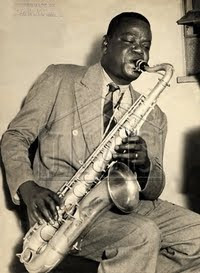Garoto on Lap Steel Guitar
| Garoto with electric lap steel guitar |
Garoto (Anibal Augusto Sardinha, 1915-55) is deservedly hailed as a Brazilian master of several plucked instruments such as cavaquinho, bandolim, violão tenor, violão (conventional six string guitar), banjo, electric guitar and the 'guitarra havaiana'. Here I'll put some focus on Garoto as a player of the 'guitarra havaiana' (=lap steel guitar).
 |
| Acoustic lap steel guitar |
The 'guitarra havaiana' or lap steel guitar was developed in Hawaii in the late 19th and early 20th centuries, it is usually positioned horizontally and the strings are plucked with one hand, while the other hand changes the pitch of one or more strings with the use of a bar or slide called a steel (generally made of metal, but also of glass or other materials).
 |
| Steel bar |
The technique was invented and popularized in Hawaii. Thus, the lap steel guitar is sometimes known as the Hawaiian guitar, particularly in documents from the early 20th century. Early lap steel guitars were conventional guitars with steel strings modified by raising both the bridge and head nut. This type of guitar is claimed to have been invented in about 1889 by Joseph Kekuku in Hawaii. The type of slide called a steel which gives the technique its name was probably originally made of steel, or the name may come from the legend that the first steel was a railroad track.
 |
| The Rickenbacker 'frying pan' |
The lap steel typically has 6 strings and is tuned to either standard guitar tuning, or an open chord. It differs from a conventional guitar in having a higher action. The electric version of a lap steel guitar was invented around 1930. The Rickenbacker'frying pan', an electric lap steel guitar produced from 1931 to 1939, was the first commercially successful solid body electric guitar.
| Anibal Augusto Sardinha, Garoto |
It is known that Garoto had his debut playing banjo, but he soon added several other plucked instruments to the inventory of instruments he mastered. In the late 1920s his idol and mentor was Zezinho (José Patrocinio de Oliveira,later known as Zé Carioca, 1904-1987), who also was a master of several plucked instruments. Zezinho had accompanied João Pernambuco in the famous recordings by João for the Columbia label, and Zezinho was one of the first to introduce the 'guitarra havaiana' in Brazil and also to record on this instrument. Garoto may have been introduced to the instrument by Zezinho and also been taught the basics from him. Around 1936 Garoto teamed with Aymoré in a duo to accompany singer Silvio Caldas and other popular artists of the time, and in 1936 Garoto also made his first registered record playing the 'guitarra havaiana' accompanied by Aymoré and Carlinhos on conventional guitars. The music is a choro titled 'Dolente' composed by Garoto
In the same year Garoto and Aymoré became staff musicians at Rádio Mayrink Veiga in Rio de Janeiro, and there they worked together with Gastão Bueno Lobo and Laurindo Almeida in an ensemble named Conjunto Havaiano, which aired live performances of popular music played 'hawaiian' style. Unfortunately, no recorded evidence of these live shots seems to have been recorded and saved.
| Carolina Cardoso Menezes |
In 1942 Garoto teamed with piano player Carolina Cardoso Menezes to record for the Victor label, between July 1942 and August 1944 they recorded at least 12 sides that became popular and since have been considered the best known work of Garoto playing the 'guitarra havaiana'. On these sides Garoto has switched to the electric lap steel, and below I'll insert some examples of the music from these recordings, which have been uploaded at YouTube. - From the first session on July 31th 1942 the duo recorded Garoto's choro 'Amoroso'
On January 12th 1943 Carolina Cardoso Menezes and Garoto recorded 'Tico tico no fubá', where Garoto also plays the violão tenor
At the same session the duo also recorded 'Carinhoso' - here played faster than usual and with a samba rhythm
When I started listening to the huge recorded output featuring Garoto, the above examples became some of my favorite recordings at once, they still are and for me they represent some of the best popular interpretation of choro although played on an instrument not usually associated with choro - the lap steel guitar. Anyway, great stuff that should be reissued in a proper format, I think.
-
Feliz Natal & Feliz Ano Novo 2015/ A Merry Christmas & A Happy New Year 2015!
---
Jo
choromusic.blogspot@gmail.com


